EVEZÉS/ROWING/Indoor Rowing élettan, edzés, étrend, sportorvoslás a sporttáplálkozás és edzés tudományának legnevesebb szakértőitől (Tudor Bompa, Ronald Maughan and T. Noakes)! Mivel általános témákat - túledzés, edzésperiodizáció, étrend - is tárgyalnak, ezért szinte minden sportág szakemberei tanulhatnak ezekből az ingyenes kiadványokból!
*FISA Development program Training Program for Clubs and Individuals
*The FISA Coaching Development Program “Be a Coach!” Handbook - Level 1
(Revised 2002 in cooperation with FISA Competitive Commission)
Level 1
Content:
Chapter 1: Basic Rigging
Chapter 2: Basic Rowing Physiology
Chapter 3: Basic Rowing Technique
Chapter 4: Basic Training
Chapter 5: General Fitness Training
Chapter 6: Learning Methodology
*Level 2
Content:
Chapter 1: Intermediate Rigging
Chapter 3: Intermediate Rowing Technique
Chapter 2: Intermediate Rowing Physiology
Chapter 4: Intermediate Training Methodology
Chapter 5: Rowing Medicine
Chapter 6: Specific Fitness Training
*Level 3
The FISA Level 3 Coaching Manual is a group of articles that provides historical information and reference materials for coaches but is not following a progression from the materials in Level 1 and 2. The FISA Coaching Education Programme was designed to provide a basic programme to follow for those nations who do not have their own national coach education system. However, FISA is currently in the process of working with the International Sport Coaching Framework (ISCF) to provide a better coach education system for rowing coaches around the world looking to expand their knowledge.
Table Of Contents
1. Current Trends
a. New on the Scene - The Big Blades - Klaus Filter
b. Do You Need Hatchets to Chop Your Water? - Volker Nolte
c. Training in High Altitude - Ulrich Hartmann and Alois Mader
e. Rigging Tables - 1996 Olympic Games
d. Rigging Tables - 1996 FISA World Rowing Championships
2. Advanced Rowing Technique
a. A Comparative Analysis of the GDR and Adam Styles - Theo Körner
b. Force Patterns on the Oarlock - Theo Körner
c. Comments on Körner’s Theory – Jim Joy
c. An Analysis of Women's Rowing and Sculling Technique - Penny Chuter
d. Identification and Correction of Errors - FISA Competitive Commission
3. Biomechanics of Rowing
a. Introduction to the Biomechanics of Rowing - Volker Nolte
b. Applying Biomechanics to Improve Rowing Performance - Peter Schwanitz
c. Physiological - Biomechanical Aspects of the Load Development and Force Implementation in Rowing - Walter Roth
4. Advanced Physiology
a. Heart Rate and Lactate During Endurance Training Programs in Rowing and its Relation to the Duration of Exercise by Top Elite Rowers - Ulrich Hartmann, Alois Mader and W. Hollmann 121
b. Physiological Measurements - Fritz Hagerman
c. Physiological Evolution of the Rowing Athlete - Fritz Hagerman and Kumika Toma
5. Women's Issues
a. Problems of High Performance Female Athletes - Moira O'Brien
b. The Physiology of Women - Helen Lenskyj
c. Exercise and Reproductive Function - Helen Lenskyj
6. Training Theory and Planning
a. Annual Planning, Periodisation and Variations - Tudor Bompa
b. Background and Experience with Long Term Build-up Programmes for High Performance Rowers - Theo Körner
c. Identification and Guidance Scheme of GDR - Theo Körner
d. Analysis of the Italian National Training Program for Rowing - Kurt Jensen, Thor Nilsen and Matt Smith
e. From a Beginner to a Successful International Rower - Dieter Altenburg
7. Overtraining and Regeneration
a. Failing to Adapt to Training - Fritz Hagerman
b. Rowing in Hot Weather - Fritz Hagerman
c. Training in Extreme Environments - The Need for Rehydration - Ronald Maughan
d. Fluid Replacement - Ronald Maughan and T. Noakes
8. Peaking and Race Preparation
a. Peaking for the Major Competition - Tudor Bompa
b. The Taper Period - Ernest Maglischo
9. Monitoring and Performance Assessment
a. Crew Selection - Kris Korzeniowski
b. Applied Rowing Ergometer Testing - Fritz Hagerman and Kris Korzeniowski
10. Nutrition for Rowing
a. Comparison of Energy Output and Input among Elite Rowers - Fritz Hagerman and Marjorie Hagerman
b. The Training Diet - Marjorie Hagerman
11. Mental Training and Psychology
a. Willing to Win (excerpts) - Willi Railo
b. Developing Attentional Skills for Rowing - Christopher Horsley
12. Management and Coaching
a. Coaching Style of Management - Frank Dick
b. Elite Sports and Coaching Development of the Future - Thor Nilsen
*Hősérülések elkerüléséről 14 oldal:
Forrás:
*INDOOR ROWING TRAINING GUIDE version 2
The Indoor Rowing Training Guide, version 2, was written by Terry O’Neill and Alex Skelton. All rights are reserved and reproduction, in whole or in part, without permission is strictly forbidden. Concept2 Ltd, Vermont House, Nott’m South & Wilford Ind. Est., Ruddington Lane, Nottingham NG11 7HQ. Tel: 0115 945 5522 Fax: 0115 945 5533 email: info@concept2.co.uk web site: www.concept2.co.uk
The Training Guide is available in three formats. You can purchase the printed version from the Indoor Sport Services Shop for L25. Alternatively, it is available to browse online or you can download it for free below..
Contents
Section 1 : Before and After Exercise
Exercise Guidelines1.02
Warm Up.1.04
Cool Down..1.05
Stretching.1.06
Section 2 : Technique on the Indoor Rower
Technique2.02
Technical Faults and Solutions.2.08
Section 3 : Physiology
The Need for Exercise..3.02
Your Body3.03
Training Intensity.3.06
Training Bands..3.09
Physiological Tools..3.11
Section 4 : Creating a Bespoke Training Programme
Periodisation of Training .4.02
Structuring the Year4.03
Personalising Your Programme - the Danish Programme by Kurt Jensen4.09
Section 5 : Preset Programmes
Programme Guidelines.5.02
Basic Conditioning by Celia and Keith Atkinson..5.03
20 Minute and 40 Minute Fitness by Celia and Keith Atkinson..5.05
2,000m Race Training5.10
Marathon Training5.21
Section 6 : Cross-Training
Introduction.6.02
Indoor Rowing for Games Players..6.05
Indoor Rowing for Runners by Andy Darling..6.07
Section 7 : Weight Training
Weight Training - An Introduction7.02
Traditional Weight Training for Rowing7.08
Alternative Weight Training Method for Rowers by Terry O’Neill.7.09
Weight Training for Children and Adolescents.7.13
Weight Training by Jurgen Grobler7.14
Core Stability Training by Ade Roberts7.25
‘Hour of Pain’ by Terry O’Neill.7.30
Section 8 : Nutrition and Weight Management
Diet by Majorie T Hagerman8.02
Losing Weight without Losing Strength..8.11
Weight Management.8.14
Section 9 : Sports Psychology
Psychological Preparation9.02
Section 10 : Exercise and Young People
Children Are Not Small Adults10.02
Biological Age.10.06
Changes at Puberty.10.08
Section 11 : Training Considerations
Ageing and Performance by Harry Welsh..11.02
The Menstrual Cycle by Kareen Larkin.11.05
Training During Pregnancy by Kareen Larkin.11.10
Adaptive Rowing11.13
Section 12 : Training Interruptions & Holiday Training
Training Interruptions..12.02
Holiday Training.12.03
Section 13 : Tests
Baseline Tests13.02
Step Test..13.03
Appendix The Performance Monitor 3 & 4 (PM3 & PM4) ii
The Performance Monitor 2 (PM2).xiii
The Performance Monitor 2+ (PM2+).xvii
The Damper Lever and Drag Factorxviii
500m Split Time to Watts Conversion. xx
Pace Guide. xxi
Weight Adjustment Factor.xxii
Training Log.xxiii
Concept2 Incentivesxxiv
Personalising your Programme - the Danish Programme..xxvii
Psychological Preparation Sheets.. xxviii
Glossary
Bibliography/Reading List
Index
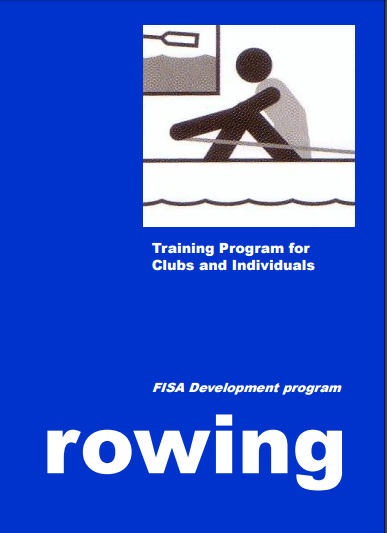
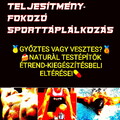
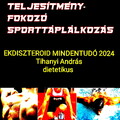
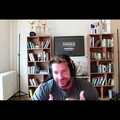

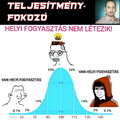
Utolsó kommentek